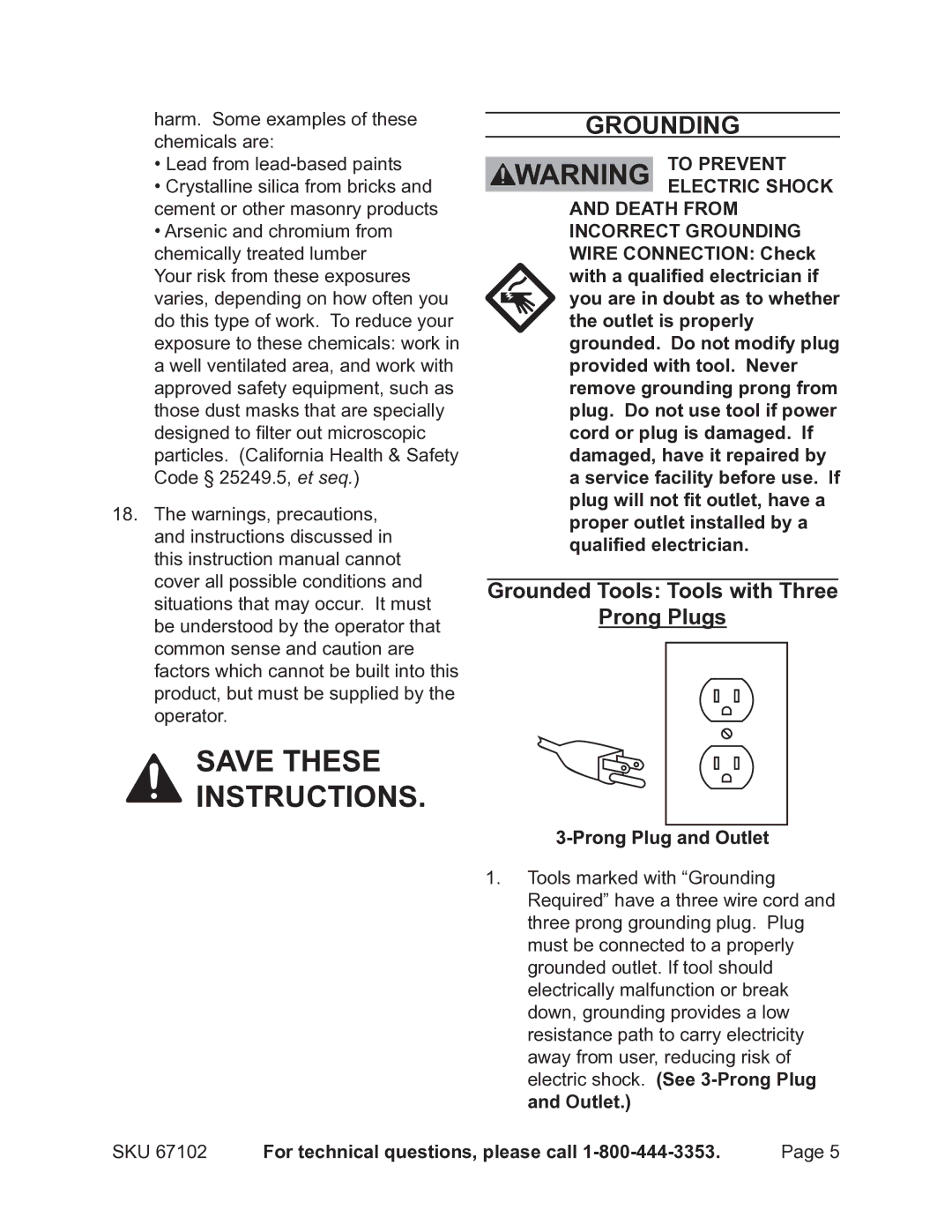
harm. Some examples of these chemicals are:
•Lead from
•Crystalline silica from bricks and cement or other masonry products
•Arsenic and chromium from chemically treated lumber Your risk from these exposures varies, depending on how often you do this type of work. To reduce your exposure to these chemicals: work in a well ventilated area, and work with approved safety equipment, such as those dust masks that are specially designed to filter out microscopic particles. (California Health & Safety Code § 25249.5, et seq.)
18.The warnings, precautions, and instructions discussed in this instruction manual cannot cover all possible conditions and situations that may occur. It must be understood by the operator that common sense and caution are factors which cannot be built into this product, but must be supplied by the operator.
Save these instructions.
Grounding
To prevent electric shock
and death from incorrect grounding wire connection: Check with a qualified electrician if you are in doubt as to whether the outlet is properly grounded. Do not modify plug provided with tool. Never remove grounding prong from plug. Do not use tool if power cord or plug is damaged. If damaged, have it repaired by a service facility before use. If plug will not fit outlet, have a proper outlet installed by a qualified electrician.
Grounded Tools: Tools with Three
Prong Plugs
1. Tools marked with “Grounding Required” have a three wire cord and three prong grounding plug. Plug must be connected to a properly grounded outlet. If tool should electrically malfunction or break down, grounding provides a low resistance path to carry electricity away from user, reducing risk of electric shock. (See
SKU 67102 | For technical questions, please call | Page 5 |
